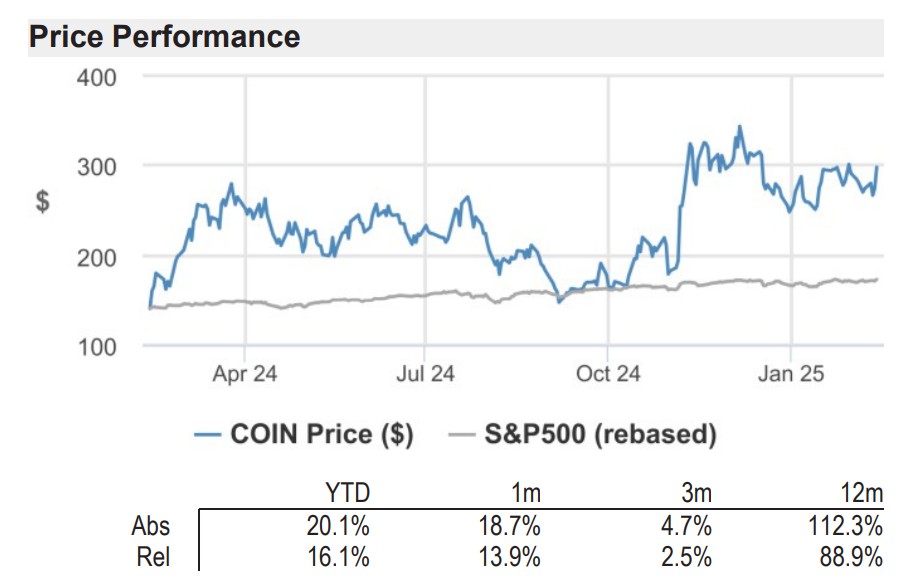In a significant move for both traders and the cryptocurrency market, Coinbase announced on April 21 that it has listed futures contracts for the XRP token on its US derivatives exchange. This development is noteworthy as the contracts are regulated by the US Commodity Futures Trading Commission (CFTC), offering investors a capital-efficient method to engage with one of the digital asset industry’s most liquid tokens.
“A regulated, capital-efficient way to gain exposure to one of the most liquid digital assets,” Coinbase stated in its release on the X platform.
Coinbase’s XRP futures contracts come in two primary forms: standard contracts, which represent 10,000 XRP, and the more accessible “nano” contracts, representing 500 XRP, currently valued at about $1,000. This launch is part of a broader trend where US exchanges like Coinbase, Robinhood, and the Chicago Mercantile Exchange have ramped up their crypto futures offerings to meet the rising demand from retail and institutional investors.
Since the launch of its US derivatives exchange in 2022, Coinbase has been steadily expanding its roster; it previously added futures contracts for Solana (SOL) and Hedera (HBAR) in February. The company currently lists derivatives tied to approximately 92 different assets globally and about two dozen in the US, which includes popular options tied to memecoins like Dogecoin (DOGE) and traditional commodities like oil and gold.
With a staggering increase of roughly 10,950% in derivatives trading volumes reported earlier this year, Coinbase’s ambitions to scale its offerings are evident.
Notably, Coinbase is reportedly in discussions to acquire the derivatives exchange Deribit as part of its strategy to deepen its presence in the derivatives market. Additionally, XRP, which boasts a market capitalization of around $120 billion as of April 21, has seen a resurgence since the US Securities and Exchange Commission (SEC) concluded its multi-year lawsuit against Ripple, the developer behind the XRP Ledger, for purported securities law infractions. Launched in 2012, the XRP Ledger remains a foundational player in the realm of payments and decentralized finance (DeFi) applications.
Coinbase Lists Futures Contracts for XRP Token
The recent listing of futures contracts for the XRP token on Coinbase’s US derivatives exchange has several implications for traders and the cryptocurrency market. Here are the key points regarding this development:
- Futures Contracts Launch:
- Coinbase has introduced futures contracts for XRP as of April 21, 2024.
- These contracts are regulated by the US Commodity Futures Trading Commission (CFTC).
- Contract Specifications:
- Standard contracts for XRP represent 10,000 XRP, while nano contracts represent 500 XRP.
- The value of nano contracts is approximately $1,000 as of the initial listing date.
- Market Context:
- The listing comes amid increasing demand for crypto futures from retail and institutional investors.
- Since 2024, US exchanges have been expanding futures offerings significantly.
- Rising Popularity:
- Futures contracts allow traders to take long and short positions, which can include leverage.
- Trading volumes for derivatives on Coinbase increased by approximately 10,950% in 2024.
- Diverse Offerings:
- Coinbase lists derivatives for around 92 different assets on its international exchange.
- This includes contracts tied to memecoins like Dogecoin and traditional commodities like oil and gold.
- Legal Developments:
- The SEC dropped a lawsuit against XRP’s developer, Ripple, in March 2024, removing some regulatory uncertainties.
- This legal win may bolster confidence in trading XRP and its derivatives.
The new futures contracts for XRP could provide valuable trading opportunities for both retail and institutional investors, enhancing market liquidity and facilitating better price discovery.
Analyzing Coinbase’s XRP Futures Launch: Opportunities and Challenges
Coinbase has recently announced the listing of futures contracts for the XRP token, marking a significant step in the evolution of cryptocurrency derivatives. This move comes amidst an expanding market for crypto futures, as firms like Robinhood and the Chicago Mercantile Exchange are also enhancing their offerings to meet growing demand from both retail and institutional investors. By introducing regulated futures contracts overseen by the CFTC, Coinbase aims to attract traders looking for a reliable and efficient way to gain exposure to XRP, one of the largest cryptocurrencies by market cap.
Competitive Advantages: One of the standout features of Coinbase’s XRP futures is their capital efficiency, allowing traders to engage with an asset that enjoys high liquidity. The introduction of both standard contracts for institutional investors and smaller “nano” contracts caters to a broad spectrum of traders, providing accessibility without steep capital requirements. This flexibility can appeal significantly to new entrants in the crypto space, who may be hesitant to invest large sums initially. Furthermore, Coinbase’s robust regulatory compliance adds a layer of trust that is often missing in the traditionally unregulated world of cryptocurrency trading.
Challenges and Industry Comparison: However, in the competitive landscape of crypto futures, Coinbase faces challenges from other exchanges that are also stepping up their game. Exchanges such as Binance and Kraken are offering diversified futures products at potentially lower fees, which could lure away cost-sensitive traders. Additionally, Coinbase’s dealings with the SEC have kept the platform in the legal spotlight; the recent resolution of the lawsuit against Ripple is beneficial for XRP, but overall regulatory uncertainties remain a concern that could dampen investor enthusiasm.
This move by Coinbase may greatly benefit both retail traders who are just beginning their journey into crypto futures and institutional investors seeking structured exposure to digital assets. On the flip side, it could create problems for platforms that lack comprehensive futures offerings or regulatory approval, putting them at a competitive disadvantage. As cryptocurrency trading continues to enter mainstream financial dialogue, firms that do not adapt quickly to these emerging trends may find themselves struggling to maintain relevance in an increasingly saturated market.

















